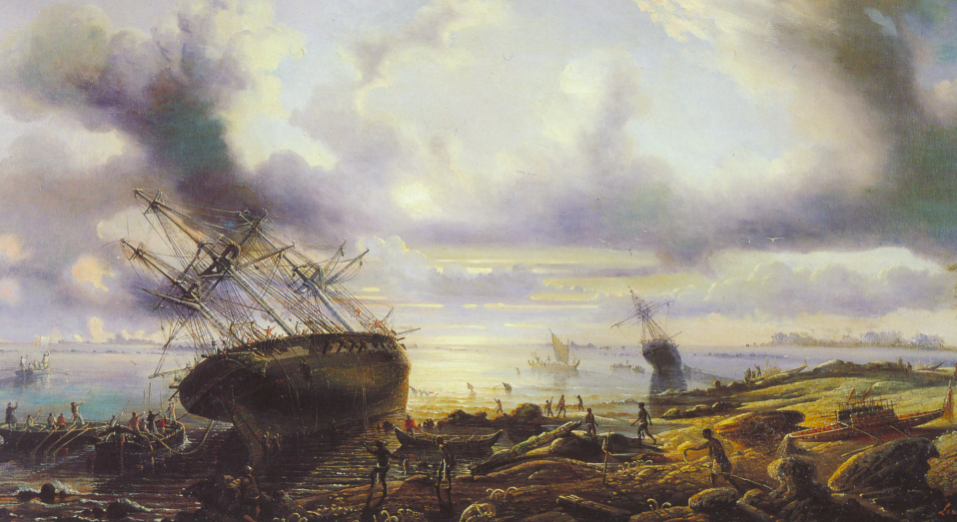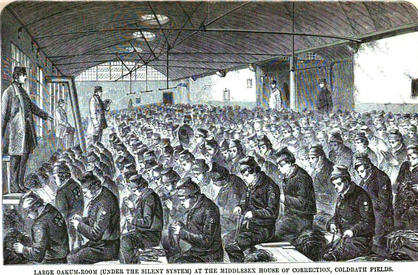Life at sea in the sixteenth century was a hard life, which many sailors began by the age of nine. They worked and slept in cramped space with the conditions of disease, poor food, low pay, and bad weather. Seamen were often cold and wet, the ships sometimes were infested with rats, and a sailors diet usually lacked meat and vegetables, which could lead to malnutrition and sickness, specifically scurvy.
During their time at sea sailors had to perform many tasks to keep the ship underway and also to maintain the ship's seaworthiness. For example, scrubbing (swabbing) the deck was important for cleanliness and also for the preservation of the wood decking. Scraping algae, barnacles, and other organisms off the hull also had the dual purpose of reducing the resistance of moving through the water and preserving the wooden boards (strakes) of the hull. Below are some other jobs of sailors in the sixteenth century. Many of these tasks are still performed on ships today.
The sailor’s tasks included manning the tiller or wheel for steering the boat and keeping it on course; dropping the sounding line to determine the water depth, especially as they neared land; handling the rigging (sails and ropes) of the ship, and general maintenance of the ship. A few more promising sailors were taught the basics of navigation and became ships’ pilots. If the ship carried cannons some sailors became gunners responsible for the cannons, powder, and ammunition on board. The youngest boys carried the gunpowder from the hold to the guns during warfare and were called “powder monkeys.”
Maintenance and repairs
Sailors were always on call all day even when off their watch. If a storm or gunfire caused damage the ship might begin taking on water and repairs were needed immediately. The captain could call all hands on deck to repair sails and mast, man the bilge pumps below decks, or be suspended over the side to patch holes in the hull with wood or sheets of lead nailed to the ship. Sometimes such repairs to the hull were done below the waterline at great risk to life. Several routine maintenance tasks are described below.
Tarring the decks
A wooden ship’s deck and hull planking must be treated to preserve the boards and to prevent sea water from leaking through to the interior. To accomplish this sailors had to pack tarred fibers into the gaps and cracks in deck boards and timbers that were exposed to the water. This task was done with the aid of a material called “oakum.” Until the early twentieth century oakum was made from old recycled tarry ropes which were painstakingly unravelled, i.e. picked, and reduced to single fibers. Sleeping on a recently tarred deck could leave stripes on a sailor’s clothing or skin. Hence the term “tar,” or “Jack Tar” referring to sailors.
The tedious and unpleasant task of picking and preparing the hemp was a common occupation in prisons and workhouses, where the young or the old and infirm were put to work picking oakum. Sailors being punished were also frequently sentenced to pick oakum and each man was expected to pick one pound of fibers for oakum per day. The novel, Oliver Twist by Charles Dickens, tells of orphaned children in workhouses picking rope fibers for oakum for use on naval ships. Children were told they were serving England and it was the patriotic thing to do.
In The Ballad of Reading Gaol, Oscar Wilde vividly described the jobs of seamen concerning ship’s maintenance in 1897.
We tore the tarry rope to shreds
With blunt and bleeding nails;
We rubbed the doors, and scrubbed the floors,
And cleaned the shining rails:
And, rank by rank, we scraped the plank,
And clattered with the pails.
Swabbing the decks
Scrubbing the deck boards was an unending task and had much more purpose than make-work to keep sailors busy. The daily swabbing had two important purposes. One was to keep the planks swollen so water could not leak to lower decks. Despite this effort decks still leaked a bit, just as any hull leaked. Just as importantly the swabbing preserved the wood because the salt water killed moss and mold.
Before the twentieth century sailors’ work went beyond swabbing decks. They also had to scrape the boards with a sandstone or pumice block, called the “holystone.” It may have been called holystone because the sailors had to kneel in a praying position to use it. This added procedure removed any fungus that may have survived the swabbing. The holystone was eventually banned as it wore down the deck boards and made expensive replacement necessary.
Managing the rigging
All the ropes needed to support ships’ masts and spars or adjust the sails are called the “rigging.” The sailors responsible for the rigging maintenance were called riggers. The riggers’ work was important to the progress of the ship because the set of the sails determined the speed of the ship.
Rigged under full sail with a favorable wind, a sixteenth-century ship might average about 4 knots (4.6 mph) and travel a distance of about 100 miles per day. For example, Columbus sailed west in the trade winds and reached the Bahamas (4200 miles) in thirty-seven days, averaging 113 miles per day. Larger sailing ships of the nineteenth century could expect to travel about eight knots (9.2 mph) with favorable winds. A ship sailing against (about 45°) the wind might expect to make only 1 mph.
Cleaning the ship’s hull
After months at sea wooden hulls required cleaning and the same applies to steel-hulled ships today. Before the convenience of dry dock was available, the only way to clean the wooden hull was a procedure called “careening,” also called “heaving down.” Careening was accomplished by sailing a ship into shallow water at high tide. When the tide receded the ship became grounded on the beach and a rope fastened high on the mast was used to pull the ship over on one side, leaving the other side of the hull exposed. The crew could then clean and tar the hull and repair any damage.
Careening was most urgently needed if the ship had suffered damage from cannon shot. Other types of damage such as dry rot, and holes bored into wood by a mollusk (Teredo, or shipworm) had to be repaired. Other organisms that attach themselves to the hull, such as algae, barnacles, and mussels, also must be removed. Mussels are not necessarily damaging to the wood, but they inhibit the smooth flow of water reducing the ship’s speed.
At the end of a voyage sailors performed some final maintenance, received their pay, then were furloughed without pay until the ship sailed again or they found a different ship in need of hands. During the time in port officers were also put on indefinite leave, with nominal pay in some cases. A sailor’s life was filled with work both during and after a voyage. Much of the labor was routine maintenance, but jobs such as furling sails high in the rigging during a raging gale was fraught with life-threatening danger. Despite the hardship and danger sailors had few options for a change of jobs and continued sailing until they could no longer do the work.


